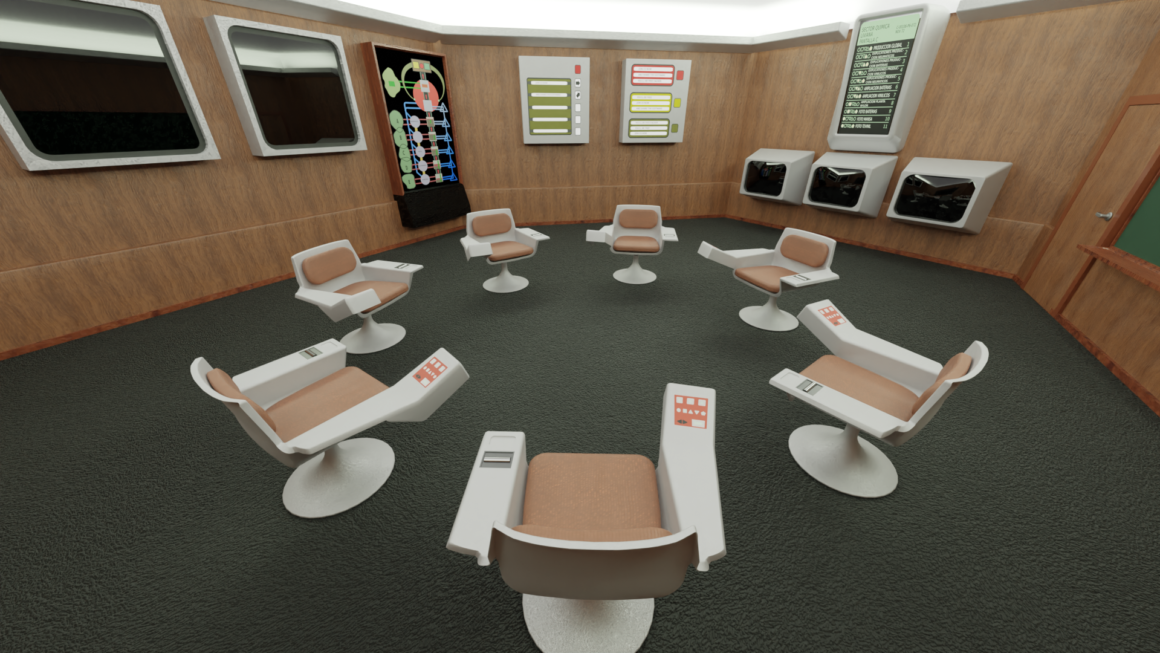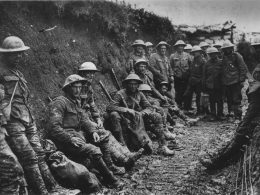By Drew Frayne
Salvador Allende’s ‘Popular Unity’ presidency in Chile, beginning in 1970, had a goal of achieving socialism via peaceful, parliamentary means. Its overthrow by a vicious military coup in 1973 was a pivotal moment for Chile and the world. The Allende government’s failure had dire consequences for tens of thousands of workers who were killed or imprisoned under the Pinochet dictatorship, and it provided a laboratory for the brutal economic experiments of the ‘Chicago Boys’, from which the neoliberalism of Thatcher and Reagan was born.
Yet the experience of the short-lived Allende government provides many rich lessons about revolution and socialism, most of which are negative — mistakes that were made which should not be repeated. But others were more positive, such as the birth of the groundbreaking computerised economic-planning system Cybersyn.
In the context of its attempt to carry through a ‘Chilean road to socialism’, against huge odds, the government was forced to try some radical innovations. Using minimal resources — a single computer and a collection of forgotten analog telex machines (imagine a typewriter that repeats what is typed in at the other end of a telephone line) — the engineers of Allende’s government created something that could provide real time economic information from factories to central decision making centres.
The project demonstrated some of the potential of a planned economy and how technological innovations could be put at the service of a rational plan of production. But it also demonstrates the limitations of technology if the working class does not own and control society’s wealth and resources, and the main levers of the economy and the state are left in the hands of the capitalists.
Allende’s socialist agenda and the emergence of Cybersyn
Chile, abundant in copper and nitrates, had been plundered by imperialist powers as far back as the 1500s. The ruthless exploitation of natural resources and labour perpetuated extreme poverty, frail infrastructure, and brutal oppression of indigenous communities, the Mapuche.
Once elected, Allende’s Popular Unity government nationalised key industries such as mining, manufacturing, textiles and agriculture. Yet his initial plans underwent substantial expansion under the influence of an increasingly militant working class emboldened by the election of a ‘compañero presidente’. Worker occupations increased as they were emboldened at the prospect of a socialist future (1).
The unanticipated increase in state-controlled industries introduced challenges in terms of economic planning and resource allocation, such as what quantities to produce, where products should be sent. Market-based economies rely on supply and demand dynamics to provide such systems of allocation, which allows governments to abdicate responsibility to provide for the majority of people — and in reality creates massive inequality(2).
Allende was determined to break free of the dominance of international capitalism and the “invisible hand of the market”, and instead develop Chile into an independent producer of high-tech products(3), rather than a host nation for parasitical resource extraction industries from the US. The Cybersyn project emerged as a vital component of this. At its core was an unlikely character, Stafford Beer, a wealthy English corporate consultant and renowned cybernetician. Beer was entrusted with the mission of using computer technology to effectively manage Chile’s planned economy.
What is cybernetics?
Cybernetics, a word coined by Norbert Wiener in the 1940s, is a multidisciplinary field focused on understanding and controlling systems. The term comes from “kybernetes,” meaning “steersman” or “governor,” highlighting its role in guiding systems to desired outcomes. Wiener’s book, Cybernetics: Or Control and Communication in the Animal and the Machine, drew parallels between cybernetics and the human nervous system. It aimed to bridge the gap between biological and mechanical systems by creating self-regulating entities capable of adaptation. Similar to how our senses detect threats, such as an oncoming car, then relay a message to the muscles via the brain to take action, an artificial version of this would detect “incipient instability” within a system of production, allowing managers to take real time action (4).
In applying cybernetics to those sectors of Chilean economy that were nationalised, Stafford Beer used an analogy of the human body. Factories were likened to muscles, responsible for tasks and production, while the central nervous system represented decision-making networks and centres. This analogy emphasised efficiency, resource optimisation, and error minimization (5).
Prior to 1970, the work of Norbert Weiner inspired the Soviet academic Victor Mikhailovich Glushkov to plan an economic planning computer system in the 1960s for the vast Russian industrial economy. His plan was however thwarted by the Soviet bureaucracy who were siloed into competing departments, unable to collaborate in the manner required. Crucially, Glushkov’s plan relied on worker input and a distributed decision making system. It was seen as a threat to the bureaucracy’s centralised power, and the project was quashed. (6)
The following quote from Norbert Weiner’s The Human Use of Humans makes it clear why cybernetics would appeal to socialist engineers and economic planners seeking to create a more humane way of organising the economy. Wiener even demonstrates a tacit understanding of alienation under capitalism.
“It is a degradation to a human being to chain him to an oar and use him as a source of power; but it is an almost equal degradation to assign him a purely repetitive task in a factory, which demands less than a millionth of his brain capacity. It is simpler to organise a factory or galley which uses individual human beings for a trivial fraction of their worth than it is to provide a world in which they can grow to their full stature. Those who suffer from a power complex find the mechanisation of man a simple way to realise their ambitions. I say that this easy path to power is in fact not only a rejection of everything that I consider to be of moral worth in the human race, but also a rejection of our now very tenuous opportunities for a considerable period of human survival.” (7)
Cybernetics, when applied to factories and economies under workers’ control and management, can be counterposed to alienating capitalist managerial systems such as Just-In-Time or Taylorism, in which humans are secondary to productive capacity and profit.
CyberSyn or “Synco”
Taking the concepts of cybernetics, and limited technological resources, the Chilean engineers in consultation with Stafford Beer, conceived of a system that would comprise the following elements.
- The Operations Room (Opsroom): The central hub of the Cybersyn project was the Opsroom, located in Santiago. This high-tech nerve centre featured a semicircular arrangement of computer consoles and large screens displaying real-time data from various industries, allowing for real time management of the economy.
- Cyberstride: Cyberstride was the software component of Cybersyn responsible for data collection, analysis, and presentation. It gathered real-time data such as production levels, resource availability, and transportation schedules. It transformed raw data into visual representations that could be easily interpreted by decision-makers.
- Industrial Cybernetics: At the heart of Cybersyn was the application of cybernetic principles to industrial management. The project aimed to create models of industrial processes and establish feedback loops that allowed for real-time adjustments to production and distribution. These feedback loops were designed to optimise resource allocation and enhance the overall efficiency of the nationalised industries.
- Telex Communication Network: The Cybersyn project established a real-time communication network that connected the Opsroom with factories and facilities across the country using analog telex machines. This communication network facilitated the rapid exchange of information critical for resource allocation.
The framework of Cybersyn aimed to create a real-time, data-driven system for managing the nationalised Chilean industries. By applying cybernetic principles and leveraging cutting-edge technology, it sought to overcome the challenges associated with centralised planning, such as efficient resource allocation, pricing, and correctly estimating production. (8)
Although Cybernetics emphasises a distributed system of decision making and feedback, the fact that Chile only had two computers in the entire country restricted the design to a more centralised system. However, the project also contained definite elements of top-down bureaucratic paternalism.
Nonetheless, Cybersyn stands in stark contrast to the monopolistic approach to technology taken by communications giant ITT, which dominated the Chilean technology industry, held back innovation in favour of profits, and collaborated with the CIA to topple Allende. (9)
The October Truck Owners lock-out
Before it was even complete Cybersyn would be put to the test during the “October Strike”. More accurately described as a lock-out initiated by small business owners, it marked a significant turning point for the Popular Unity government. While the key factor in the government’s survival was the swift and powerful unity of the working class in maintaining production and distribution, Cybersyn played a role that remains less known.
The stoppage was ignited by growing tensions between Allende’s government and segments of the small business community, particularly truck owners, who formed a network known as Gremialismos. Anger over the government’s effort to nationalise key industries, including trucking, and fear of the growing strength of Chilean workers, was exacerbated by right-wing parties, with assistance from the U.S. and the CIA. (10)
Stafford Beer described the initiators of the lock-out as follows, “The Gremialismos, far from being unionists, as reported in the western press, are baby capitalists, insistent on a protectionist line.” (11).
The lock-out swiftly escalated into a nationwide blockade that disrupted Chile’s supply chains, leading to shortages of essential goods and services. Coupled with ongoing right-wing terrorist attacks on critical infrastructure, it galvanised the Chilean working class into action and played a pivotal role in the development of the Cordones Industriales. The Cordones consisted of self-organised factory workers who coordinated with neighbourhood groups to ensure the distribution of goods to factories and consumers.
Coinciding with this, Raul Espejo and Mario Grandi, central figures in the CHECO project overseeing Cybersyn, recognised the need for swift action to overcome the lock-out. They adapted Cybersyn’s existing elements, utilising the managerial concepts of cybernetics, to coordinate the distribution of essential goods.
A central command centre was established in the Presidential Palace, bringing together key figures, including the President, cabinet members, political party leaders from the Popular Unity coalition, and National Labour Federation representatives. This assembly of individuals with decision-making authority allowed for quick decision-making and adaptation to the rapidly evolving situation.
In addition to the central command hub, specialised centres dedicated to various sectors like transportation, industry, energy, banking, agriculture, health, and supply chains were established. Telex machines connected these centres to the Presidential Palace. The improvised system was enormously effective in its application. Requests for resources were made via the network. Decisions about prioritisation were made centrally. And surplus goods, such as food or fuel, could be very quickly allocated to where they were most needed.
While ultimately it was the determination and ingenuity of the working class that defeated the bosses’ lockout, which involved approximately 40,000 trucks being taken off the road, the telex network significantly aided the government’s ability to respond to emergencies. (12)
The working class as the true strength
Amid the October crisis, the working class had taken leaps in political consciousness, getting a sense of their own power. Workers spontaneously organised themselves, transcending perceived social and cultural differences, and recognising their shared class interests in uniting against the capitalists.
This unity created the ground upon which Cybersyn could function effectively. Without the Cordones Industriales and the newly organised and radicalised working class, Cybersyn would have been a mere technological framework with no meaningful purpose. The collective effort of the working class in maintaining production and distribution was the lynchpin of Chile’s response to the lock-out.
Ultimately, the engineers and bureaucrats of the Cybersyn project, and Allende himself, neglected the role of the “muscles and organs” of their system. They neglected the warning signals from the working class about the growing threat of counter revolution. They neglected core tenets of cybernetics that a system must be “self regulating” and signals about threats must be acted upon. Marxism,emphasises the necessity of self emancipation of the working class, rather than a top down bureaucratic, paternalistic approach. A technological system, regardless of its level of sophistication, is not a substitute for an organised, militant, and determined working class, conscious of its historic task.
Likewise, Cybersyn ultimately remained hampered by the limited economic strategy of Allende, which did not constitute a revolutionary rupture with capitalism. While significant nationalisations were carried out (often led by workers’ themselves), capitalists still retained control of strategic sectors of the economy — up to 60% — placing them outside the control of state planning. This also gave the bosses space to regroup and sabotage the government’s economic project.
However, while the working class’s organisation and solidarity were pivotal in navigating the crisis, their role extended beyond immediate practicality. They created an opportunity for revolutionary advancement that, unfortunately, was blocked by Allende. Rather than deepening, extending and connecting the Cordones, drawing in all layers of the oppressed masses, Allende attempted to appease the business owners of Chile by leaving the military intact and even affording generals key roles in his cabinet. This error would prove fatal for Allende, and the working class of Chile.
Key lessons
Edin Medina, a technology historian and author of important works that tell the story of CyberSyn highlights the role of the state in the advancement of technology. (13) This is true — tech innovation is certainly driven by state investment. But Medina frames the state as a neutral entity. In fact, the state is a body of armed men in service of the ruling class. The role of the state is often obscured until moments of crisis or disaster and there are few crises turned catastrophes that unveil the brutal role of the capitalist state as obviously as the Chilean coup.
Ultimately, Cybersyn was destroyed by the Pinochet dictatorship. The horrific brutality of the regime, in which countless humans were murdered, tortured and torn limb from limb, stands in stark contrast to the cyberneticians’ vision of a harmonious economic system in which the inherent value of each human under the system is appreciated.
Had the working class seized power in Chile, Cybersyn (and indeed other technologies) could have been further strengthened, developed and used to democratically plan the production and allocation of society’s wealth and resources to meet human need. Since then there have been many more technological innovations which possess the potential to enormously reduce human toil and suffering. But as long as the capitalists retain political and economic power, that potential remains unrealized, posing the need for workers and youth to learn the lessons from Chile and get organized in a revolutionary struggle for a socialist society.
- “Weavers of revolution” by Peter Winn
- “Capital: A Critique of Political Economy”, Chapter 32, by Karl Marx
- “Brain of the firm” by Stafford Beer
- MIT Press — “Cybernetic Revolutionaries: Technology and Politics in Allende’s Chile” by Eden Medina. URL: https://mitpress.mit.edu/9780262525961/cybernetic-revolutionaries/
- “Designing Freedom” by Stafford Beer
- “Glushkov and His Ideas: Cybernetics of the Future” by Vasiliy Pikhorovich. URL: https://cosmonautmag.com/2022/07/glushkov-and-his-ideas-cybernetics-of-the-future-by-vasiliy-pikhorovich/
- “The Human Use of Beings: Cybernetics and Society” by Norbert Wiener.
- “Cybernetic Revolutionaries: Technology and Politics in Allende’s Chile” by Eden Medina.
- “The Sovereign State: Secret History Of ITT” by Anthony Samson
- “The Pinochet File: A Declassified Dossier on Atrocity and Accountability”. By Peter Kornbluh
- “The Santiago Boys” Podcast — Episode 4 — “The Cybernetic Jacket”. https://open.spotify.com/episode/3AYNTRLyDczbYRCFz4AfKp?si=pJWggbzQQ02AkdElB0Jf1g&t=356
- “Cybernetic Revolutionaries: Technology and Politics in Allende’s Chile” by Eden Medina.
- Jacobin Magazine — “Cybernetics in the Service of Socialism: Stafford Beer’s Chilean Adventures” by Eden Medina. URL: https://jacobin.com/2015/04/allende-chile-beer-medina-cybersyn/











